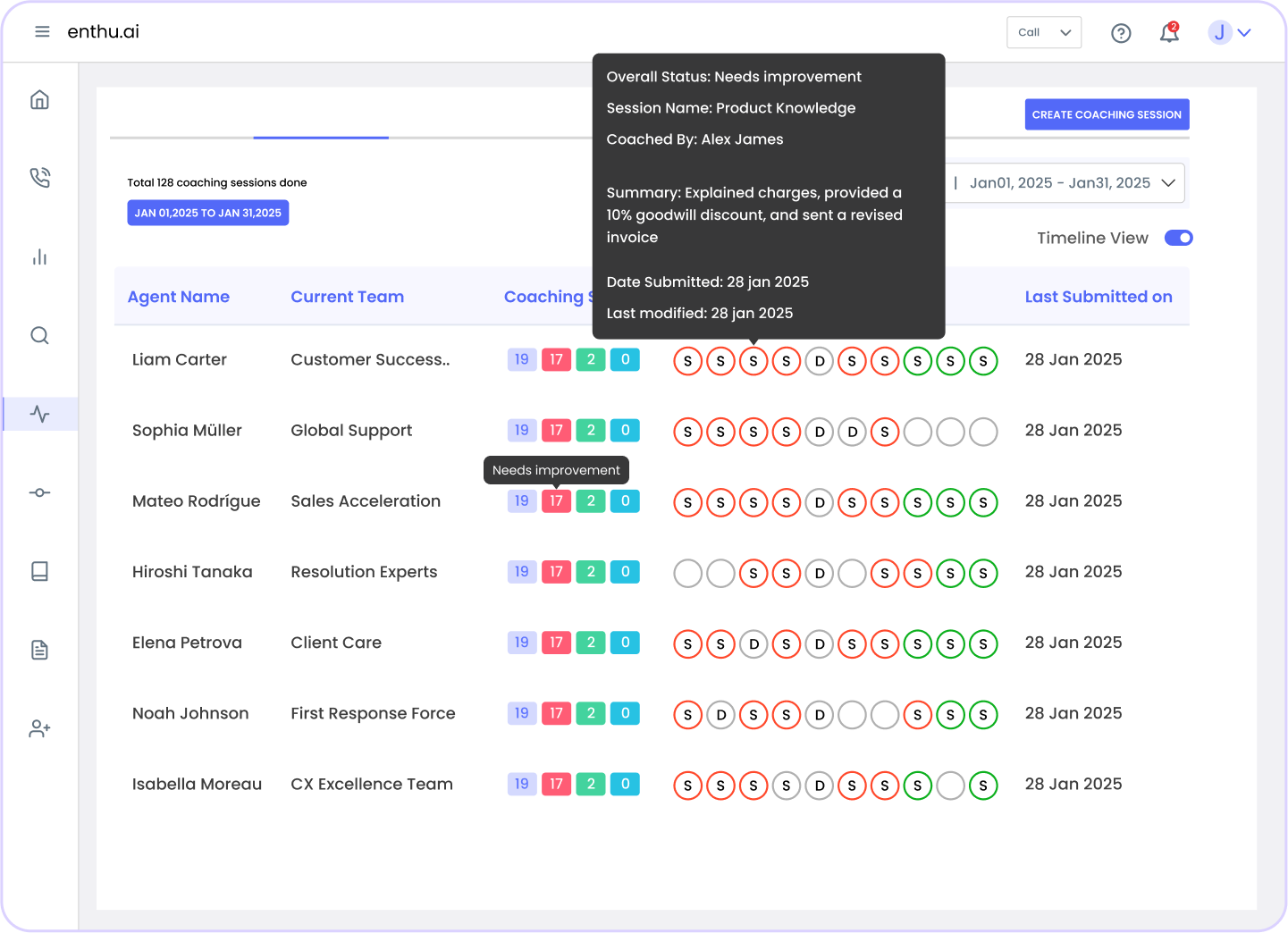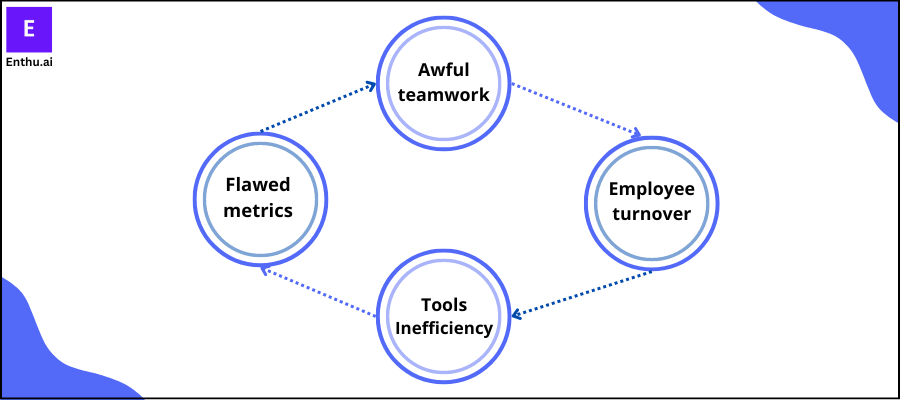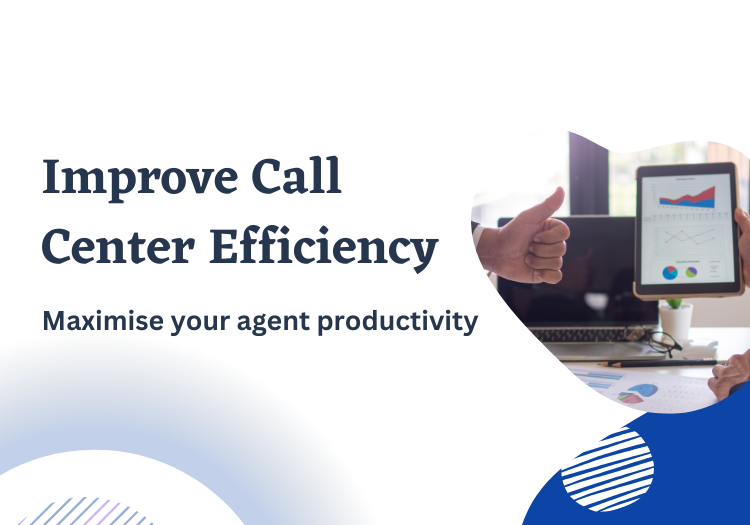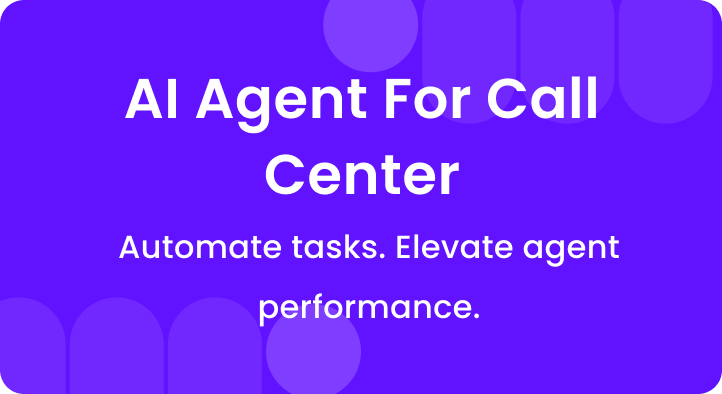Things do not happen by chance.
Call center efficiency is a compound result of focus, strategic delegation, and above all, an innate love for work.
In a call center setup, an agent’s proficiency requires a deep understanding of the subject matter and other factors.
For example, the psyche of a human, who has to answer back-to-back calls without sounding tired, is an important yet mostly ignored factor.
In this comprehensive post, we discuss the metrics, to-do has, and trends that impact the proficiency of a call center setup.
Read along!
Table of Contents
A. What is call center efficiency?
Call centre efficiency is a measure of a call center’s productivity. It balances effectiveness, low costs, and short customer wait times. It measures how well a call center can manage customer questions and issues while using its resources efficiently.
Efficient call center tools aim to provide high-quality service. They must meet performance standards and respond quickly to consumers.
By the way if your agents are working from home, you need to set some parameters to avoid unproductivity.
Operational Efficiency = Business Output (Revenue) / Input (Cost & Effort) In a survey of 1300 global CEOs, 77% agreed that the focus should be on making internal improvements. Explore how Enthu.AI helps you improve your call center efficiency NPS= (% of Promoters) – (% of Detractors) * 100 Planning is an essential step for any process and thus in a call center efficiency, NPS is the most significant ingredient that leads to success. If you are pondering over the organizational matters related to operation, plan, and business tactics, NPS could provide the needed clarity. A promoter’s 9 or 10 score is the ultimate goal that is a must to accomplish. Most often, an organization can surge by 2.5 times in growth and 24 percent in income. Let us consider the following points for better contact center productivity: In a study conducted by Aberdeen, most of the agent’s outlay 14 percent of the time on acquiring information to assist customers. They also face roadblocks and struggles, when they have to complete their day-to-day tasks. Their performance deteriorates due to the negative factors, it is evident from the following instances: To get affirmative results you need to follow the following regime: Empowered employees are devoted to their work and often perform better than others. They are loyal to the organization and go beyond the call of duty to innovate and help in reducing customer churn rate. Agents should learn from each other and work towards their interacting skills while building relationships. Overall, it builds consistency in narrative and process thereby unifying the voice of the brand across the call center. Always encourage your agents to share feedback about a particular customer or their overall experience on the floor. Let them ask questions and clarify their doubts. After all, they are the first ones to know if something’s wrong with the industrial process. Micro-managing the employees should not be encouraged. Self-evaluation & correction gives them more confidence and judging ability. Using employee recognition software fosters motivation. Call center managers can ensure floor productivity through the following tips: The self-learning application transcribes every call and provides actionable feedback to the agents. It tracks and compares different agent calling sessions and suggests improvements. AHT = Talk Time + Hold Time + After Call Work / No. of Customer Conversations Consider various call center practices and customer experience metrics. KPIs provide clarity in identifying non-performers and provide them with the required help. First things first, evaluate the AHT to decipher performance issues. ‘Average Handling Time is the average time an agent consumes to resolve customer issues, from the start of a call until it disconnects. Use quality monitoring tools such as Enthu.AI to track such metrics that help in the faster evaluation of an agent’s caliber to address more calls. AHT also includes the time duration for which the customer puts the call on hold. Moreover, the time that an agent spends on after-call tasks such as updating the CRM, making notes, or any other back-end tasks are also covered. To embrace call center industry standards, always consider AHT as an important differentiator to acknowledge agent performance. Business-critical metrics, critical customer metrics, and process-critical metrics are the terms used in call centers to get to know the following aspects: Apart from AHT, another important metric is the NVA. The Non-Value Added metric tracks all those conversations or tasks that aren’t adding any tangible value to the business and only increases the duration of the call unnecessarily. For example, an agent’s inability to answer a customer’s query, wrong information being given, arguments, rudeness, unclear audio, prolonged talks deviating from the core topic, denial of service, incorrect service request, and call disconnection are all counted under NVA. The higher the NVA, the lower the customer satisfaction and the agent’s performance. A comprehensive training program will introduce call center employees to the best learning experience. Before setting up a learning program, we must know that an employee must enjoy the program. On the other hand, if the activities are monotonous and the outcome is nothing then the whole setup and time consumption will go to waste. As mentioned previously, Enthu’s conversation AI application is enabling call centers to build a smarter workforce. On similar lines, the application also filters out moments where the agent either fumbled or lacked apt knowledge. For example, the app captures data around competitor comparison, sales negotiation, legal, & compliance, new issues etc. from hundreds of calls. Now, such an app is essential because only 65% of the total surveyed companies were able to drive comprehensive programs for call center agents. Using Enthu call center agent training is bliss for the companies. The aim of the training program is: While there are a number of call center metrics to do the math, we consider the following 5 as the most important indicators for call center efficiency. In some call centers, the agents are not well-connected and are not able to deal with difficult customers. Moreover, leaders have no potential to guide the team well, so progress is impossible. There is no doubt that a well-knit team is a necessity to make operations smooth and easy. Employees are the assets of a company; if new hires are coming and old ones are leaving, then the morale of all the employees will be down. So a company must boost the morale of its employees. The revolving door of new hires is an obstacle to success. The metrics of a call center are an essential calibrating method; thus, tracking the right metrics is a requisite. Great processes need greater tools, and call center efficiency should move on from outdated solutions. Update them frequently or replace them with more contemporary conversation intelligence applications like Enthu.AI, embrace automation, or else watch your competitors scale. In fact, we should implement operating support systems (OSS) automation to elevate the efficiency of call center operations and enhance overall customer service quality. Update these tools from time to time. In this post, we tried to gain a low-level understanding of call center efficiency and the different metrics that impact it. From embracing automation with speech analytics tools like Enthu to emphasizing consistent training of employees, there’s a lot of ground that call center managers have to cover. The practice of building a smarter call center may look straightforward at first, but it requires deep-rooted intelligence to achieve the results. Needless to say, the era of impatient consumer demands, in-the-moment results, and applications like Enthu will have an overarching influence. If you are locking horns with insufficient call center performance, we’d like to engage and identify the lapses. 1. What is call center efficiency? Call center efficiency is a measure of how effectively a call center deploys its resources-agents, technology, and processes-to deliver fast, high-quality customer interactions at the lowest possible cost. It’s not merely about servicing the highest volume of calls; rather, true efficiency assures that customer issues get solved expeditiously, agents remain productive, and operational cost reductions are sustained. 2. How do you measure call center efficiency? Call center efficiency can be measured through metrics such as average handling time, first call resolution rate, customer satisfaction scores, service level agreement compliance, and agent productivity. 3. Why is efficiency important in a call center? Efficiency is important in a call center as it directly impacts customer satisfaction, operational costs, and overall productivity. It ensures timely and effective customer service while optimizing resources and meeting business objectives.B. Five ways to boost call center efficiency
1. Plan net promoter score
2. Optimizing call center workflows
3. Keep your staff motivated and acknowledge them with fair feedback

4. Monitor and improve AHT and other metrics

5. Training workshops and learning guidelines

C. Key metrics to evaluate a call center efficiency
D. Factors that impact a call center’s potential

1. Awful teamwork and poor leadership
2. Poor employee turnover ratio
3. Tracking the flawed metrics
4. The inefficiency of the tools
Conclusion
FAQs



 On this page
On this page

